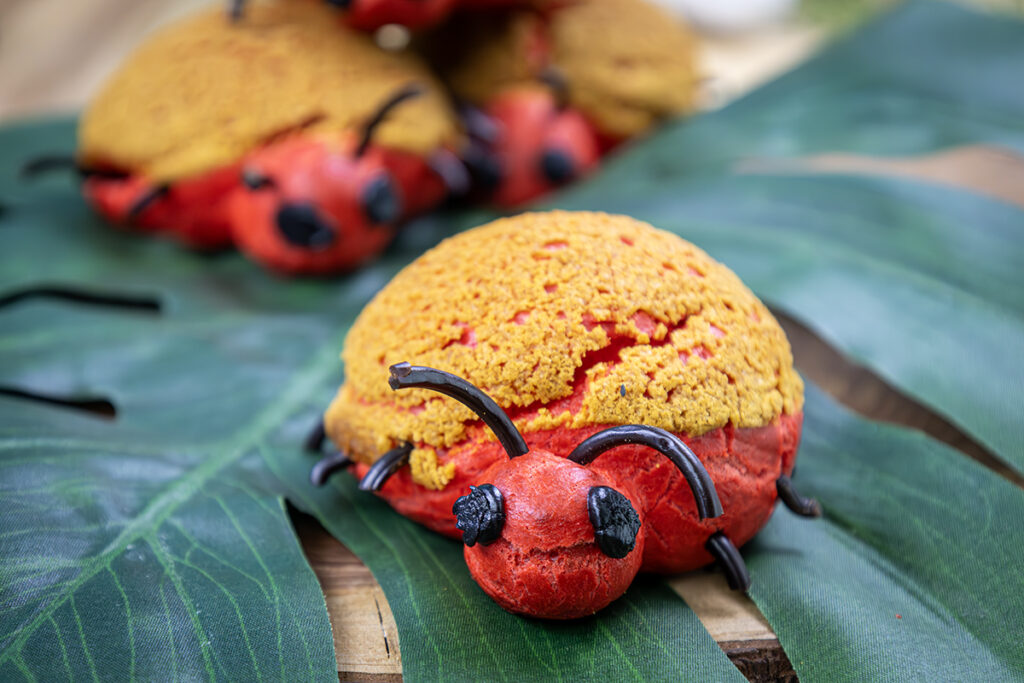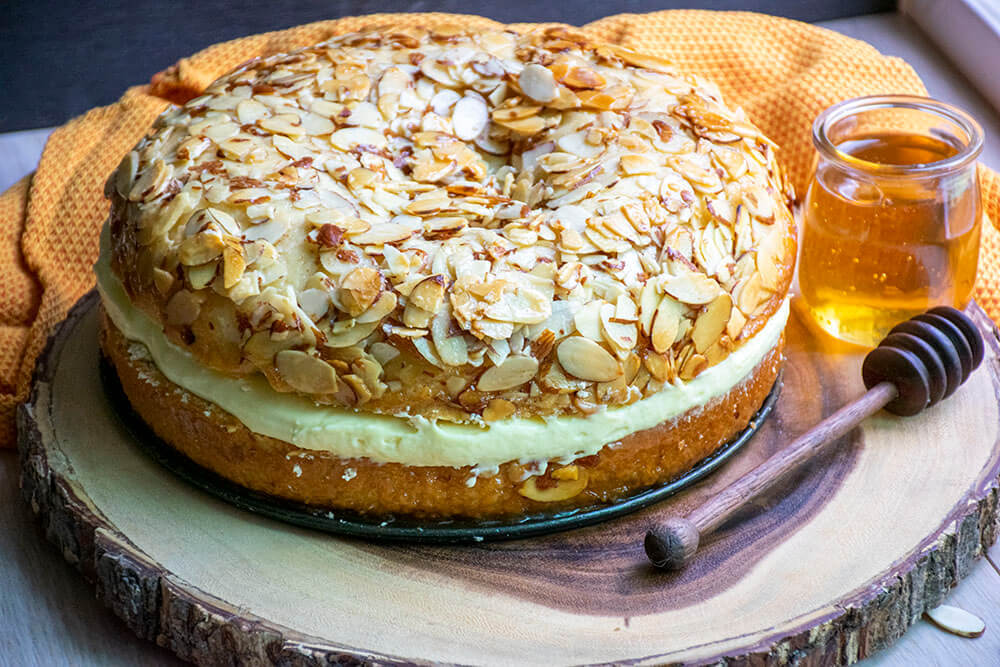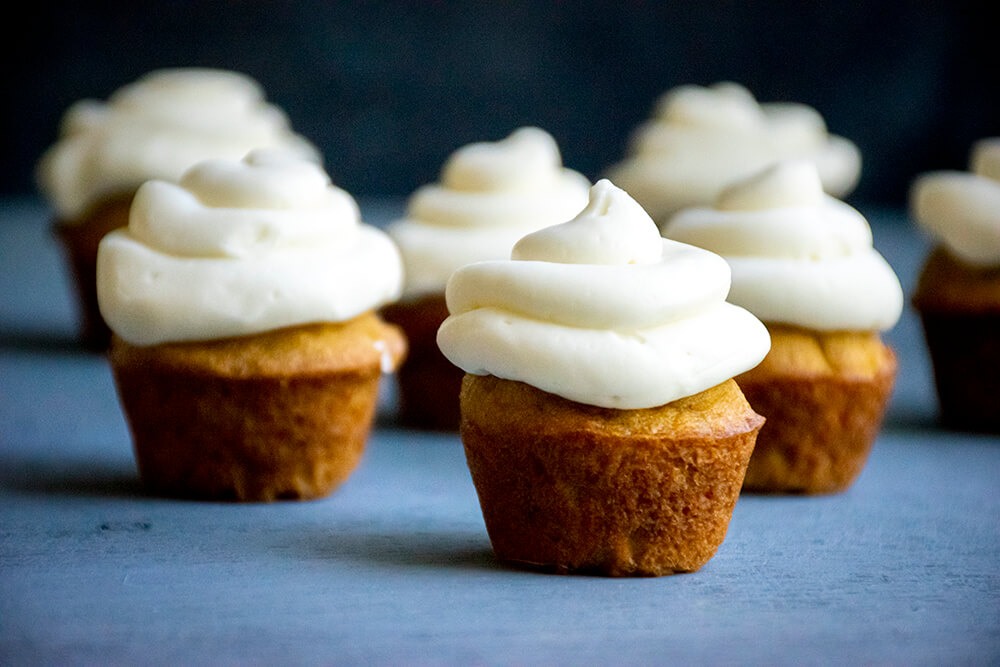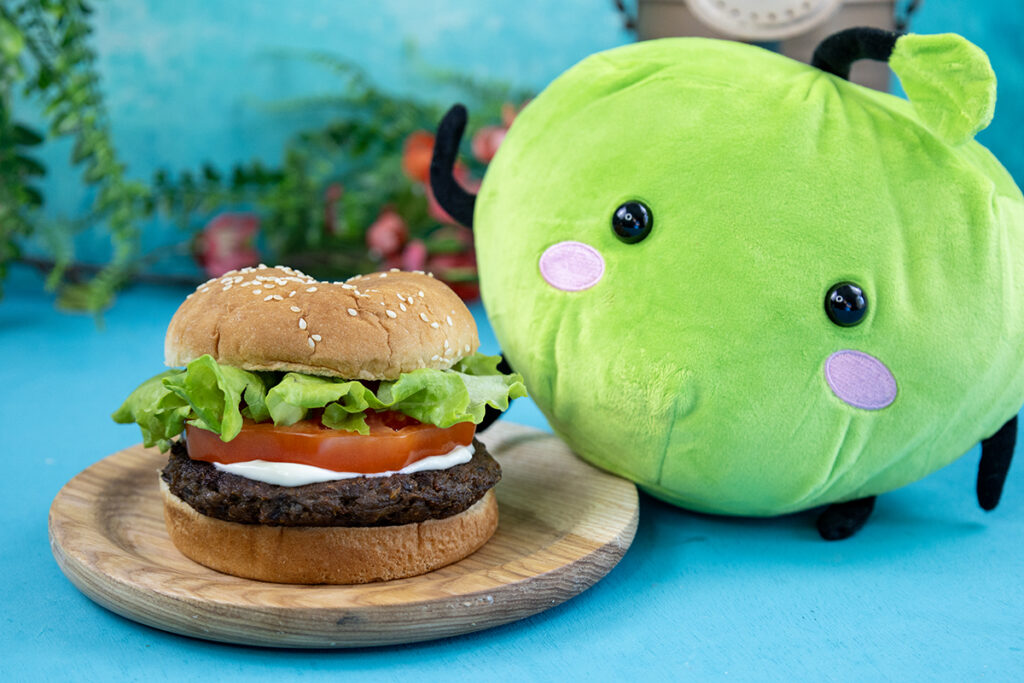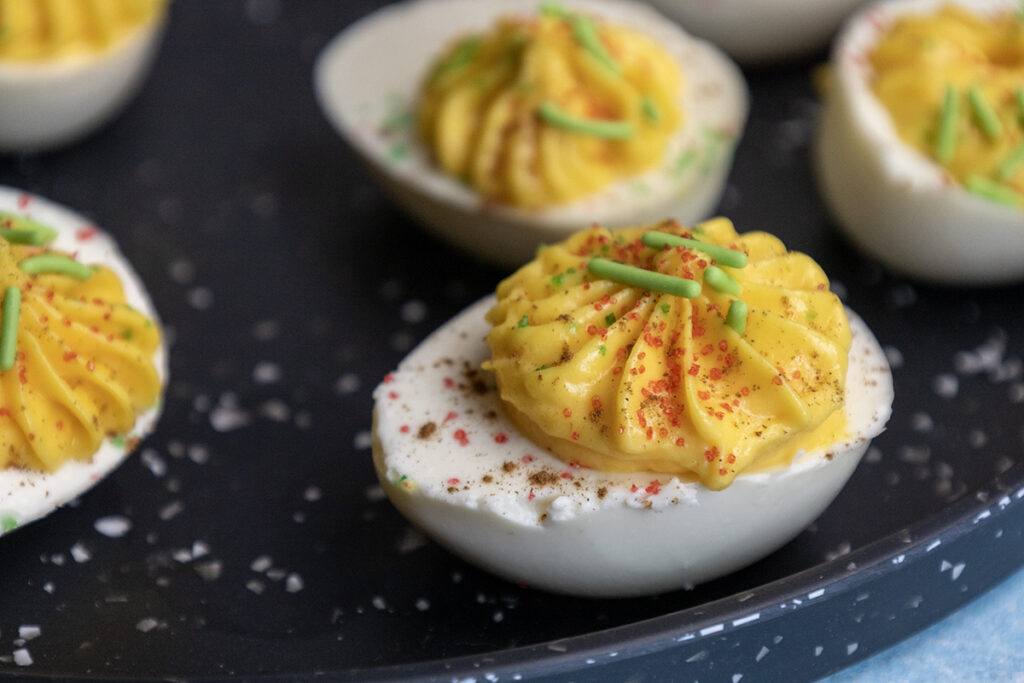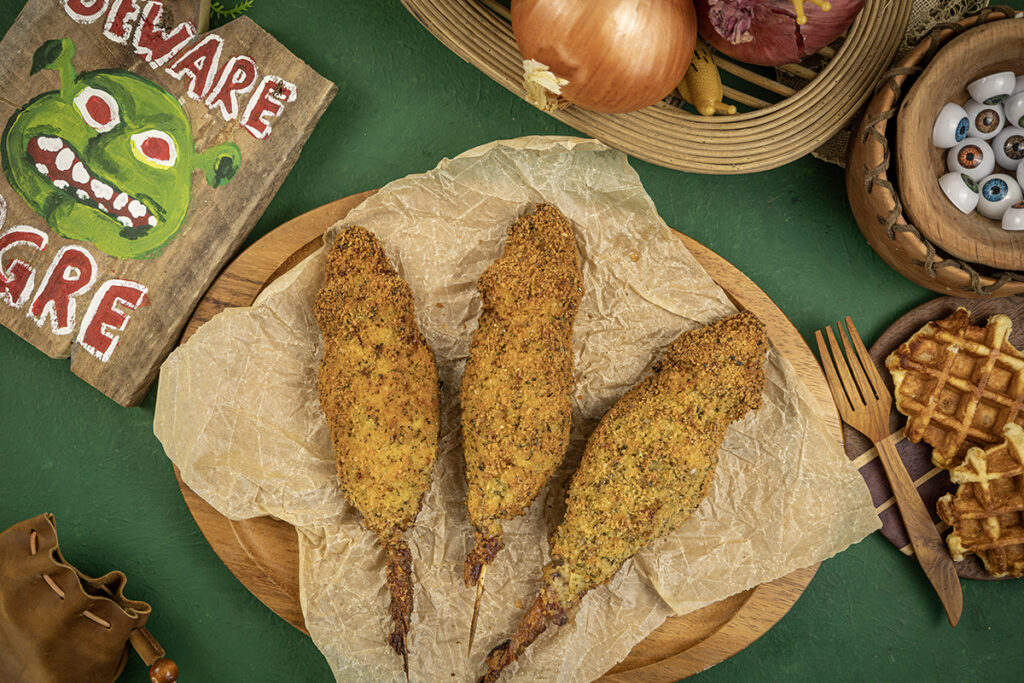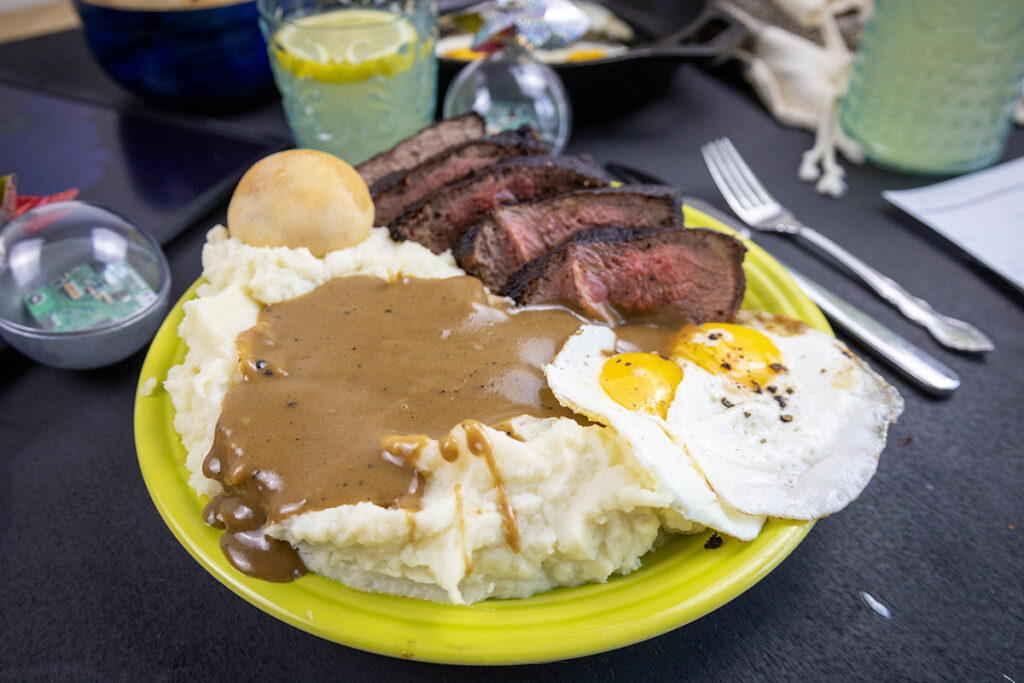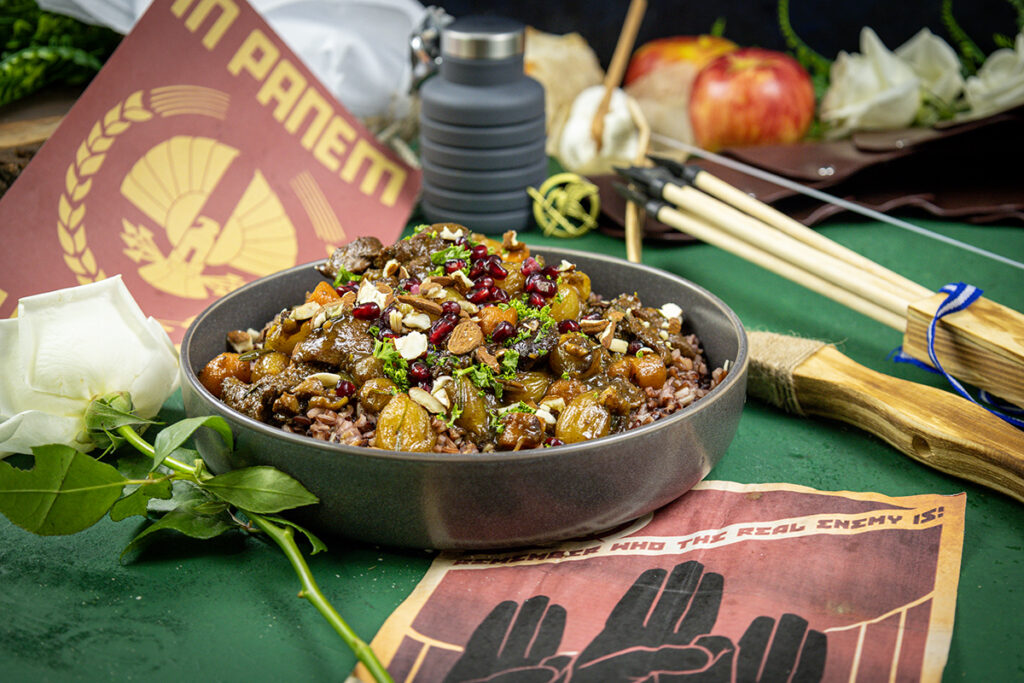Sous Vide Pork Chops & Butter Spinach
The Starving Chef is supported by Hungry People like you. When you make a purchase through an affiliate link on my site, I may earn a little bit of cash on the side (at no extra cost to you) to help keep my kitchen running. Read our disclosures here.
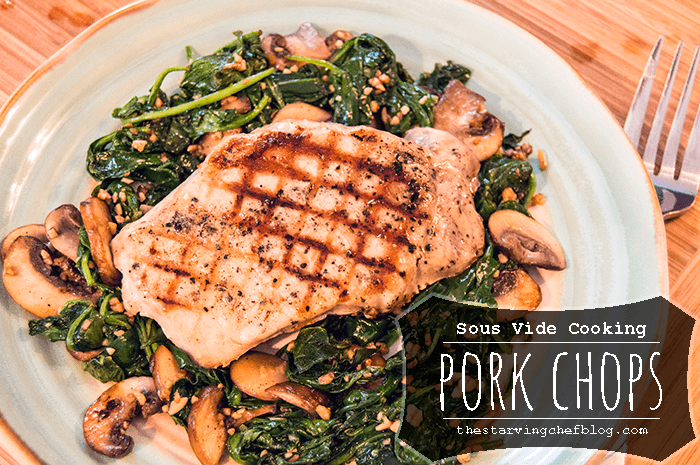
What’s Up, Hungry People?
You all know I’m kind of obsessed with the sous vide technique, right? But let me tell you, if there’s one cut of meat that has completely won me over to the sous vide side, it’s pork chops. Seriously, once you try it this way, you’ll never look back!
The Magic of Sous Vide Pork Chops
I’m one of those savvy shoppers who usually buys whatever meat is on sale. Often, I end up with thin cuts of pork that become as tough as a math problem if you overcook them for even a split second. But worry not! With sous vide, these pork chops stay tender, juicy, and downright awesome all the way through. Oh, and let’s not forget—no need to marinate them beforehand. Just a simple sprinkle of salt and pepper will do. Seal ’em up in a vacuum bag, and dunk them into a pot of water with your handy immersion circulator set anywhere between 1 to 6 hours. Boom! Top it off with a quick sear for that Instagram-worthy crust, and you’re good to go!
Immersion Circulator vs. Slow Cooker: The Showdown
If you’re hemming and hawing over whether to invest in a slow cooker or an immersion circulator, let me clear the air. I own a Precision Immersion Circulator from Anova Culinary (affiliate link), and I have to say it was worth every penny. Sure, it costs a bit more upfront than a slow cooker, but the precision you get is second to none. Say goodbye to the stress of overcooked meat.
While I wouldn’t go as far as to say an immersion circulator could totally replace a slow cooker—they each have their merits—my slow cooker has definitely taken a back seat since I added the immersion circulator to my kitchen gadget lineup. It’s kinda like that friend who you thought was cool until you met someone even cooler, and now the first friend is just sitting there, collecting dust. Poor guy.
A Brief History of Sous Vide Cooking
Ever wondered where the magical technique of sous vide came from? Well, it’s not as new-fangled as you might think. Originating from the French term for “under vacuum,” sous vide was developed in the mid-1970s by French chefs as a method of cooking food evenly and retaining its natural flavors. Initially used to cook foie gras, the technique quickly spread to other types of food. Restaurants had a field day with it, but it wasn’t until the past decade or so that affordable home units made it accessible for folks like us!
How-To Overview: Sous Vide Basics
The basic principle of sous vide cooking is pretty simple: seal your food—usually meat, but you can sous vide veggies too—in a vacuum bag and submerge it in a water bath at a precisely controlled temperature. You’ll need an immersion circulator to keep the water at that exact temperature for an extended period. The result? Perfectly cooked, juicy, and tender food every single time.
The Equipment You’ll Generally Need
- Immersion Circulator: This is your sous vide workhorse. It heats the water and keeps it circulating to maintain a steady temperature.
- Sealable Plastic Bags: Though vacuum-sealed bags are ideal, you can also use high-quality resealable bags.
- Large Pot or Water Bath Container: The larger the better, especially for big cuts of meat.
- Tongs, Kitchen Scissors, and Other Utensils: For handling and finishing your sous-vide masterpiece.
Sous Vide vs. Other Cooking Methods
So, why choose sous vide over grilling, roasting, or frying? Here are some considerations:
- Precision: The controlled water temperature ensures your food cooks uniformly, eliminating the risk of undercooking or overcooking. You’re basically cooking with a safety net, guys.
- Moisture Retention: Traditional methods often dry out your food. In contrast, sous vide cooking retains moisture, making your food juicy and flavorful. Think of it as trapping all the good stuff inside.
- Low-Stress Cooking: With traditional methods, timing is everything. But with sous vide, you can leave your food in the water bath for a longer period without the risk of ruining it. It’s kinda like having a personal assistant who never messes up.
- Limited Active Cooking Time: Unlike grilling or frying, where you need to be on standby, sous vide is more “set it and forget it.”
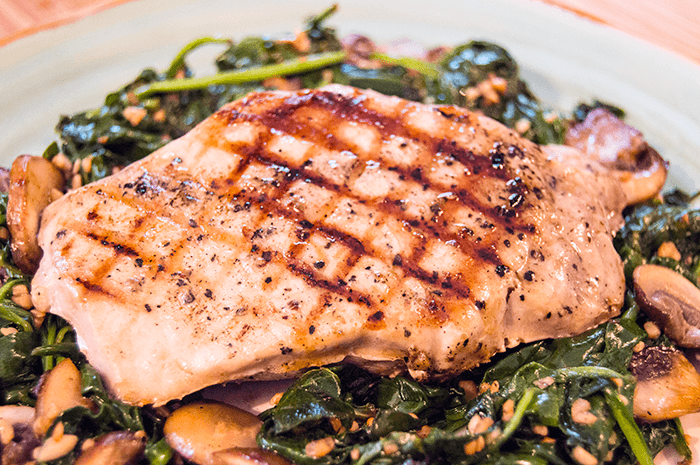
Here’s What You Need
- Pork Chops: The star of the show, providing a meaty, satisfying centerpiece.
- Salt: Enhances the flavor of the pork and acts as a tenderizing agent.
- Pepper: Adds a subtle spicy kick, balancing the richness of the pork.
- Spinach: Offers a fresh, leafy contrast and packs in nutrients.
- Garlic: Infuses the spinach and mushrooms with aromatic depth.
- Mushrooms: Add an earthy flavor and a different texture to the spinach bed.
- Butter: Melts to create a savory sauce, making the spinach and mushrooms more indulgent.
Sous Vide Pork Chops: Tips and Troubleshooting
- Immersion Circulator Choice: While I use a Precision Immersion Circulator from Anova Culinary, there are many reliable brands out there. Choose one that fits your budget and needs. Some are Wi-Fi-enabled, but that’s not essential unless you’re super tech-savvy.
- Choosing Pork Chops: Opt for thicker cuts for the best results. Thin cuts can become too tender and lose their texture, almost like they’ve been overly braised.
- Bag Sealing: Make sure you’ve sealed the vacuum bags well to prevent any water from entering. If you notice air bubbles in the bag during cooking, it’s a sign the bag wasn’t sealed properly. Take it out, dry it, and reseal.
- Cooking Time: While sous vide is forgiving, there is a range for how long you can cook your pork chops. Anywhere from 1 to 6 hours will yield tender meat, but beyond that, you risk making the pork mushy.
- Temperature Monitoring: Always double-check your immersion circulator’s temperature setting. A variance of just a few degrees can make a big difference in texture and doneness.
- Searing at the End: A quick sear will add color and a bit of crunch to the otherwise very tender pork. Use a grill skillet to get those Instagram-worthy grill marks, but avoid overcooking. A minute or two per side is usually sufficient.
Alright, Hungry People, if you were ever skeptical about diving into the sous vide world, I hope this post has piqued your interest. Seriously, give the sous vide pork chops and butter spinach a shot, and you’ll see why my slow cooker has been demoted to the appliance bench.
From the precision in cooking to the incredible texture, sous vide simply takes home cooking to a different level—without requiring you to be a Michelin-star chef. Trust me, once you taste the juicy pork chops and buttery spinach, you’ll get why this method is a game-changer. Now go fire up that immersion circulator and make your taste buds proud!
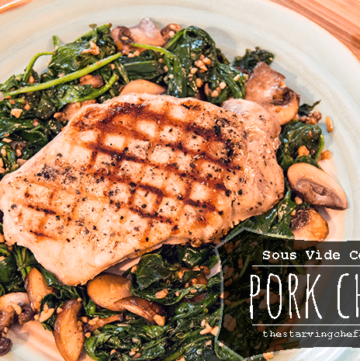
Sous Vide Pork Chops & Butter Spinach
Ingredients
FOR BUTTER SPINACH AND MUSHROOMS:
- 4 cups spinach
- 1 tablespoon garlic minced
- ½ cup mushrooms sliced
- 2 tablespoons butter melted
- salt & pepper to taste
Instructions
- Fill a large pot with water and attach the immersion circulator to the side. Preheat the water to 130°F.
- Pat the pork chops dry with a paper towel. Season both sides with salt and pepper. Place the chops into a vacuum-seal bag and use the vacuum sealer to remove all the air and excess moisture.
- Place the sealed pork chops into the water bath for 1-6 hours. The pork will become more tender the longer it cooks.
- When you're nearly ready to serve the pork, preheat a greased grill skillet on high heat. Place the spinach, butter, mushrooms, and garlic into a vacuum-seal bag. Season with salt and pepper and toss gently to coat the contents with butter. Seal the bag (some butter may be removed in the sealing process).
- Place the sealed spinach into the water bath and cook for 10-15 minutes, or until the spinach has halved in size.
- Remove the pork from the water bath and take them out of the vacuum bags. Place each chop on the preheated grill for one minute, rotate 90 degrees, grill for another minute, then flip and repeat until the pork has nice grill lines. Do not overcook the pork; if the pan is hot enough, 1-2 minutes per side will achieve nice grill lines.
- Remove the spinach from the water bath. Plate the spinach and place the pork chop on top. Season with salt and pepper, serve hot, and enjoy!



























